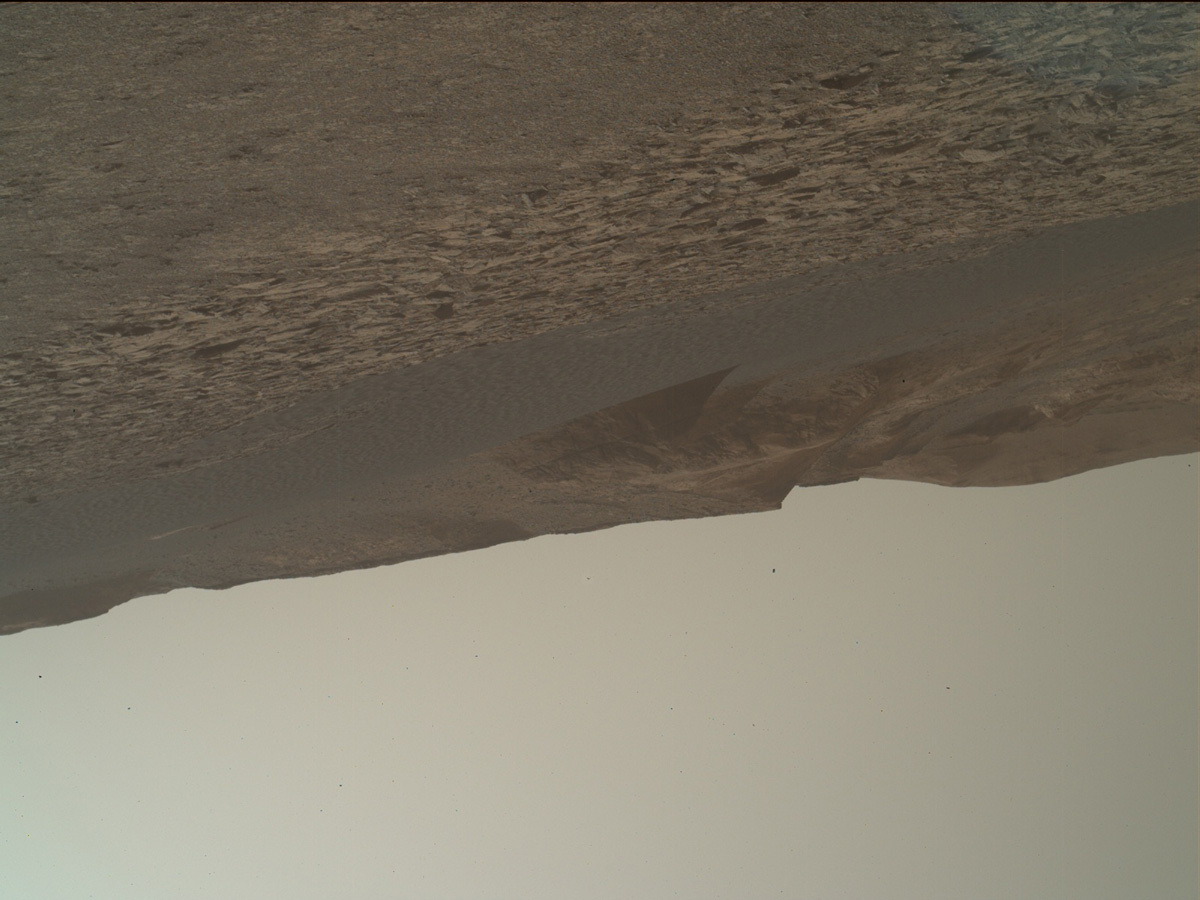3 min read

Today we’re doing another touch-and-go, fitting in a little bit of everything. And while we are planning for tomorrow on Mars, the science team is also busily analyzing the results of the triboelectric experiment that Curiosity did over the weekend (see the sol 3017 blog for details), looking at the images like the upside-down MALHI (shown), which are both beautiful and important for science. The image is upside-down because of the orientation of MAHLI when it was taken – the arm was extended almost straight up, like a periscope, to get the desired angle of view; and to point back toward the sands from that position, the MAHLI camera needed to be upside-down.
First up in the plan is contact science with MAHLI and APXS on a bedrock target named “Lunas,” as part of our regular tracking of bedrock composition and changes. The target was a little tough to pick in order to avoid some discolored areas and the veins and try to get a good representation of the bedrock itself.
After we stow the arm, the rover will take several targeted science observations, including a ChemCam RMI mosaic of the sulfate unit and a large Mastcam mosaic of the contact with the sulfate unit. We are also doing some environment observations, including a crater rim extinction and a long dust devil movie.
The drive in today’s plan is aiming to park us just before we transition out of the fractured intermediate unit (and before we enter the fractured rubbly unit). Once we get back into the rubbly unit, the driving will get a little bit tougher for the Rover Planners, because there are a lot more small and medium sized rocks that we’ll need to avoid to minimize wheel wear. But, for this short drive of about 25 meters, the terrain is flat and clear of major hazards. The plan is to park where we can do one last contact science observation of this unit before leaving it behind. We are taking advantage of the short distance of the drive and the arm will be unstowed at the parking location. We’ll be taking extra workspace and drive direction imaging at this location as our last look at the unit.
On the second sol of the plan, we have more of our standard environmental observations, including another dust devil movie and a suprahorizon movie with navcam in the morning, and a long Mastcam sky survey and solar tau in the afternoon. We’re also throwing in a late-afternoon Navcam optics monitoring activity to help us track the dust on the cameras.
Written by Ashley Stroupe, Mission Operations Engineer at NASA's Jet Propulsion Laboratory







